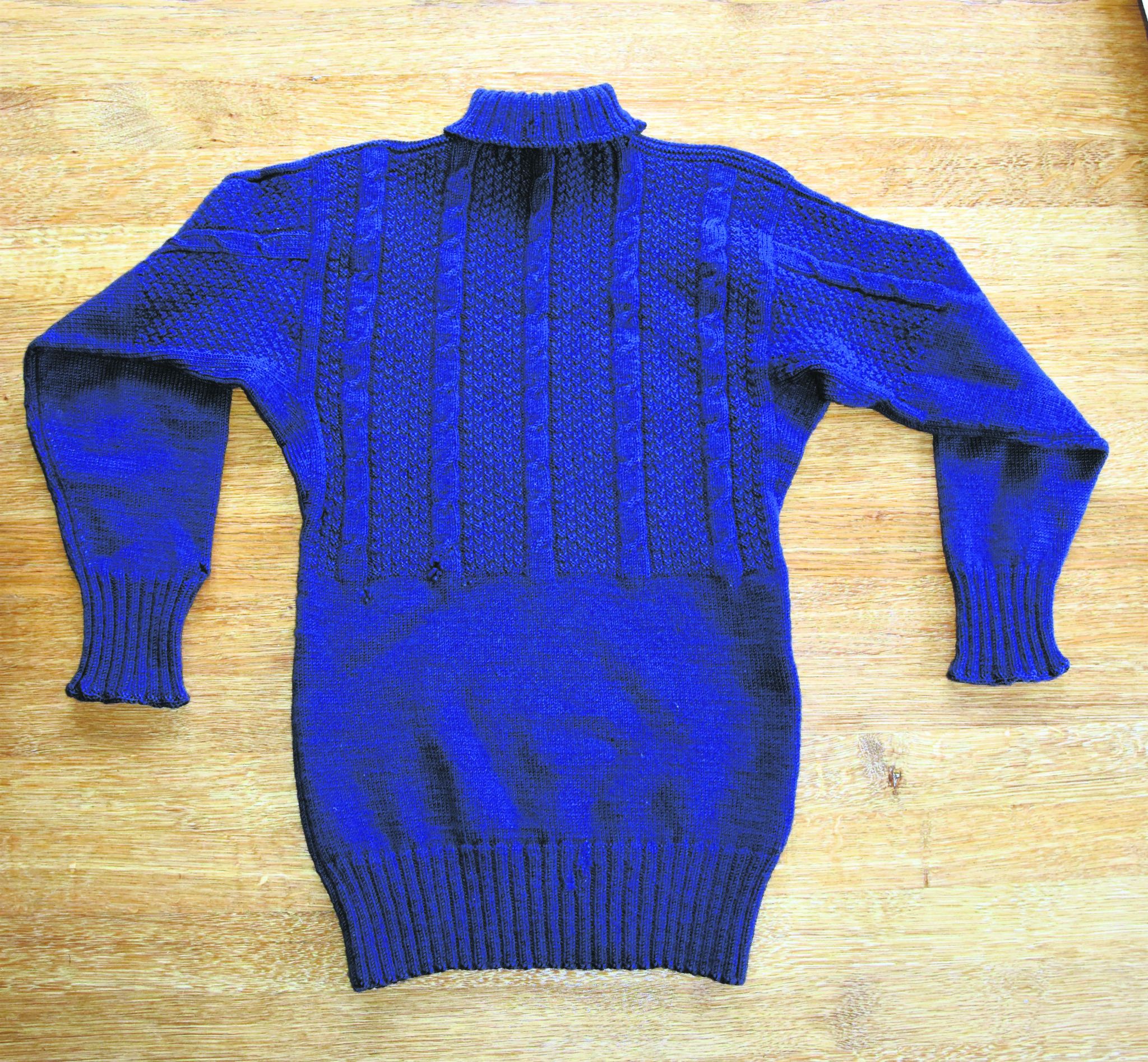One West Cork island had its own version of the Aran fisherman’s jumper. It is said that even each family had its own distinct pattern, so that if a body was drowned or got lost at sea, it could be identified, writes Mary McCarthy
THE past is indeed a foreign country. And from the early 1880s to the 1920s, fishing in Cape Clear, eight or nine miles off the shore of Baltimore, experienced its boom time.
The Cape Clear fishermen had a reputation for being skilful seamen. They had no option but to be good at sea, travelling across the ocean to land.
‘Cape Clear is out on the edge, but in the 1880s it was the centre of something,’ says Diarmuid O’Drisceoil, a Cork historian with connections to the area.
‘Boats had grown to real significance. The ocean was so important. The sea was their place. Their fishing vessels were large – around 50ft to 60ft or more in length – powered by sails, and they had no engines. At the time, it was a gaeltacht, but the boats had English names, such as The Blue Jacket, The Wanderer and Guiding Star.’
While we might have heard of the island’s fishing reputation, not many know about the Cape Clear geansaí – a garment unique to the West Cork island.
It’s a patternered jumper, similar to the Aran jumper that was worn by the fishermen of the era. ‘It was navy in colour, not white, and made of pure wool,’ explains Diarmuid. ‘It was a thinner jumper than the Aran pullover that is specific to the Aran islands.’

Women of the island knitted them with five-ply wool. ‘They used three needles as one complete garment,’ says Diarmuid. ‘Under each arm was a diamond-shaped jusset, so that when the working fishermen raised their hands above their heads, it put a drag on the jumper, so it didn’t pull up along their body.’
 A detail of the pattern unique to Cape Clear.
A detail of the pattern unique to Cape Clear.
Effectively, it meant the jusset allowed the jumper to stay put when the wearer’s arms were raised, not exposing their midriffs to the elements!
Diarmuid’s uncle from Comalán townland at the east end of Cape brought back his geansaí to his home on Cape, on his last visit to his mother before she died in 1974. This traditional Cape pullover was made for him in 1924 by his neighbour, Catherine Cadogan, or better known as, Catherine Con, who lived with her brother in a thatched house in the same townland. Each coastal island had their own pattern such as a lozenge shape, cable, rope stitch, moss or blackberry stitch, amongst others.
Each coastal area also had their own patterns.
It is said that even each family had its own distinct pattern, so that if a body was drowned or got lost at sea, it could be identified with a local family.
It’s not known if this was a romantic notion, or actual reality.
But it is carried on in folklore, and was made popular by John Millington Synge in Riders to the Sea.
Diarmuid adds that there was an artistic dimension to the Cape geansaí.
‘From the neck to the chest area, it was patterned from a third to a half of the front and back,’ he explained.
‘Attached to this, there was a stocking stitch panel. The hem had ribbing and so had the end of the sleeves. At the end side, there was a seam to the end and it was intentionally made to look like a seam. This was part of the normal fisherman’s uniform of the time.’
Diarmuid says the geansaí had the artistic attitude of the people, and it showcased the women as artists and crafts people.
‘They didn’t have a pattern to follow and they didn’t have to decorate their garments, but this was their need to express and satisfy their artistic expression, like a poet writes a poem to express something,’ he says.
The last verse of the poem Memories of Tráigh Chiaráin by John Cotter shows the lament for the decline of Cape, whose population went from 600 in 1880, to 450 in 1926. The fishing had collapsed, because the American market had closed to Ireland, and the spawning and overfishing led to an economic decline, with the heyday ending in the 1920s.
Oh, can they see it from their graves where they quietly lie,
The lonely harbour now so bare, no ropes or nets to dry;
But I can weep that saw its strands in the flowing of the tide,
All strewn with hake and ling and cod from distant waters wide.








